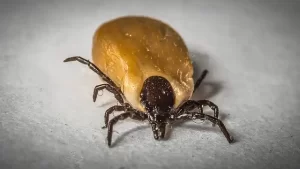COVID-19: A biotechnology conference in the U.S. caused 245K infections
- Engineered Soybeans with Pig Protein: A Promising Alternative or Pandora’s Dish?
- Severe Fever with Thrombocytopenia Syndrome (SFTS): A Tick-Borne Threat with High Mortality
- Why Isolating Bananas Extends Their Shelf Life?
- This common vitamin benefits the brain and prevents cognitive decline
- New report reveals Nestlé adding sugar to infant formula sold in poor countries
- Did Cloud Seeding Unleash a Deluge in Dubai?
COVID-19: A biotechnology conference in the U.S. caused 245K infections
COVID-19: A biotechnology conference in the U.S. caused 245K infections. CNN and other US media reported on the 11th that a viral genetic fingerprinting study showed that a biotechnology conference held in Boston, USA at the end of February this year became a super transmission source of the new coronavirus, with as many cases spreading in the United States and other countries. About 245,000 cases.

Like fingerprints, the differences between genes are also “unique”, so they are called genetic fingerprints. Using genetic fingerprints can identify mutant viruses, diseased cells, etc.
According to reports, the Broad Institute in Massachusetts, the United States, discovered two special genetic fingerprints of the new coronavirus, which are related to a biotechnology conference held in Boston in February this year.
The researchers said that after further tracking, they found that as of November 1 this year, one of the genetic fingerprints had spread from Boston to at least 29 states in the United States and other countries including Australia, Sweden, and eventually 245,000 people were infected. The study also found that another variant of the genetic fingerprint also caused at least 88,000 infections in the United States.
At the meeting held in Boston at the end of February this year, about 200 people from all over the world attended. The researchers said that no one wore a mask at the meeting, no one maintained social distancing, and no one even expressed concern about the existence of the virus, which eventually triggered this super spread event.



